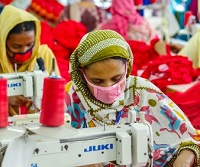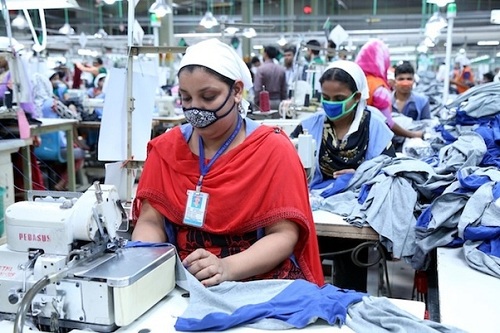 Bangladesh garment manufacturers and workers are currently living in perpetual terror of cancelled orders and deferred payments. The spread of new virus variants is delaying apparel recovery, making it tough for analyst to identify the duration and gravity of the pandemic.
Bangladesh garment manufacturers and workers are currently living in perpetual terror of cancelled orders and deferred payments. The spread of new virus variants is delaying apparel recovery, making it tough for analyst to identify the duration and gravity of the pandemic.
Drop in global trade threatens Bangladesh exports
Recent data by United Nations Conference on Trade and Development (UNCTAD), estimates global trade value have dropped 3 per cent in the first quarter of 2020. Global fashion brands continue to cancel orders as their stocks pile up. As per a McKinsey report, stores and ware houses across the world house $192 billion worth of unsold stock at the moment. The industry’s profits fell 93 per cent in 2020, says a Textile Focus report. Textile exports from Bangladesh declined 17 per cent, reports BGMEA. The country earned $3.24 billion from apparel shipment though the amount is 1.98 per cent lower than a year earlier.
Goals to prepare for upcoming challenges
Around 85 per cent of Bangladesh’s exports include textile and fashion goods. The country was already facing challenges related to workers’ wages, job security, lack of digitization, longer lead times, etc, and was suffering from different challenges. Internal challenges mostly related to labor and employee wages and job security, lack of digitization, demand-supply imbalance, order cancellations or delays, etc. COVID-19 has accelerated these challenges, nudging brands to analyze current situation and prepare for upcoming challenges. As per the Textile Focus report, brands need to prepare themselves for upcoming challenges by setting short and long-term goals.
security, lack of digitization, longer lead times, etc, and was suffering from different challenges. Internal challenges mostly related to labor and employee wages and job security, lack of digitization, demand-supply imbalance, order cancellations or delays, etc. COVID-19 has accelerated these challenges, nudging brands to analyze current situation and prepare for upcoming challenges. As per the Textile Focus report, brands need to prepare themselves for upcoming challenges by setting short and long-term goals.
Enhanced supplier collaboration with flexible decision making
The short term goals of brands include collaborating with suppliers to support their staff and workers by protecting their jobs and rationing support facilities. Brands also need to develop a new process to develop worker’s skills and evaluate their performances. They need to share losses caused by order cancellations besides ensuring stability of their future orders. Companies need to enable flexibility and faster decision making. They need to enhance logistic capacities, address procurement-based issues and those related to any natural disasters like the pandemic.
Digitization and capacity building
Long term goals of fashion companies include digitizing and automating their entire production processes. They also need to focus on capacity building and investment for product diversification and development. Besides, they need to use data while making businesses. Companies also need to improve their risk assessment procedures and increase supply chain resiliency.
Bangladesh manufacturers need to develop supply chain risk management strategies such as a PPRR framework which involves identifying possible threats to the industry, analyzing data and impact of supply chain disruptions on inventory, supplier relations, selling and order, sales revenue etc, making emergency plans to focus on the activities according to level and magnitude; developing response strategies and identifying quickest recovery plans.
The current year will continue to be a tough one for Bangladesh textile industry. To tide over tough times, manufacturers and decision makers need to enhance their growth strategies, align themselves with global trends and focus on technological up gradation of their facilities.












